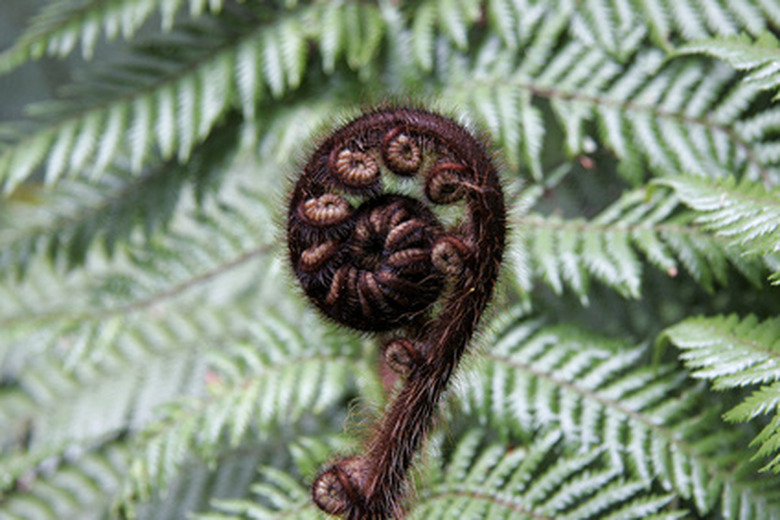Silver Leaf Fern Plant
Lovely growing in a shaded garden bed under the protective branches of a tropical shade tree, silver leaf fern (Pteris argyraea) also makes a handsome large house plant. Some people call it silver brake as a common name. Outdoors it grows well in the ground year-round in USDA hardiness zones 10 and warmer.
Origins
Silver leaf fern is a pan-tropical species, a term meaning it grows naturally all around the world's tropical regions in appropriate soils and light exposures. It grows in the shady understory of forest trees in sandy, acidic soils rich in organic matter in Central and South America, equatorial Africa and across southernmost Asia and northern Australia.
Ornamental Features
An evergreen fern, silver leaf fern's fronds grow erectly to a height of 24 to 39 inches, according to the "A-Z Encyclopedia of Garden Plants" published by the American Horticultural Society. Each frond bears one or two ranks of leaflet branches. The leaflets of dark green bear a central band or stripe of gray to silvery white. Ferns do not flower, but fertile fronds bear clusters of spore cases on their undersides.
- Lovely growing in a shaded garden bed under the protective branches of a tropical shade tree, silver leaf fern (Pteris argyraea) also makes a handsome large house plant.
- An evergreen fern, silver leaf fern's fronds grow erectly to a height of 24 to 39 inches, according to the "A-Z Encyclopedia of Garden Plants" published by the American Horticultural Society.
Cultural Requirements
Plant silver leaf ferns in frost-free climates in a sandy, acidic pH soil that is rich in organic matter. During the warmth of the growing season, water freely to keep the soil moist but not soggy, reduce watering slightly in winter months. Do not allow any direct sun rays to reach the plant leaves, as scorching occurs, eventually leading to death of foliage. Deep shade or bright indirect light suffices. High ambient humidity is ideal, but this tropical fern species tolerates low humidity, such as that commonly found in homes and offices. Fertilizing centers around reapplication of compost and organic mulch around the rhizome roots rather than a scheduled watering with man-made fertilizer products.
Uses
In shaded tropical gardens, mass these ferns into expansive ground-cover sweeps under large shade trees or grow as accent clumps in a mixed border with bromeliads, begonias and other shade-loving plants. Alternatively, raise it in a container in the home or office as a houseplant. It, like the ubiquitous Boston fern, tolerates the comfortable temperatures and dry air typical in these interior spaces.
- Plant silver leaf ferns in frost-free climates in a sandy, acidic pH soil that is rich in organic matter.
- In shaded tropical gardens, mass these ferns into expansive ground-cover sweeps under large shade trees or grow as accent clumps in a mixed border with bromeliads, begonias and other shade-loving plants.
Maintenance Concerns
While over-exposure to direct sunlight rays poses a primary threat to the health and beauty of the silver leaf fern, over-watering promotes root rot, especially when grown as a house plant. Scale insects and mealybugs wreak havoc as they suck juices from the fronds, leading to browning and eventual leaf death. Extended bouts with these insects reduce foliage, gradually weakening the plant until the rhizome roots expire.
References
- "A-Z Encyclopedia of Garden Plants;" Editors Christopher Brickell and H. Marc Cathey; 2004
